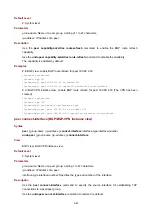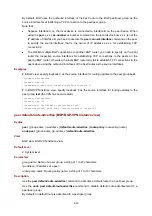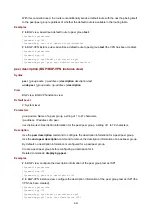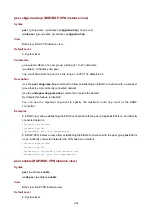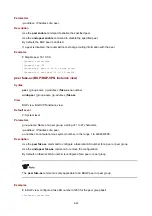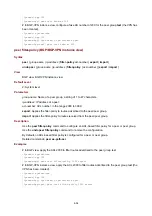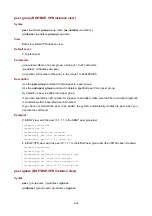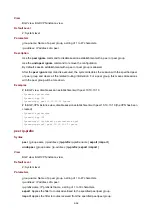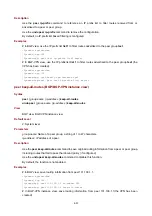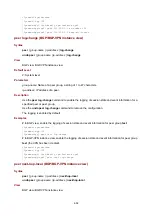
6-44
z
Use the
peer
ip-address
as-number
as-number
command. After that, the system creates the
specified peer by default.
z
Specify the AS number of the peer when adding it to the specified peer group by using the
peer
ip-address
group
group-name
as-number
as-number
command; or use the
peer as-number
command to specify the AS number of a peer group, and then a newly added peer will belong to
the AS.
The AS number of a peer/peer group cannot be modified directly. To do so, you have to delete the
peer/peer group and configure it again.
Examples
# In BGP view, specify peer group
test
in AS 100.
<Sysname> system-view
[Sysname] bgp 100
[Sysname-bgp] peer test as-number 100
# In BGP-VPN instance view, specify peer group
test2
in AS 200 (the VPN has been created).
<Sysname> system-view
[Sysname] bgp 100
[Sysname-bgp] ipv4-family vpn-instance vpn1
[Sysname-bgp-vpn1] peer test2 as-number 200
peer as-path-acl (BGP/BGP-VPN instance view)
Syntax
peer
{
group-name | ip-address
}
as-path-acl
as-path-acl-number
{
export
|
import
}
undo peer
{
group-name | ip-address
}
as-path-acl
as-path-acl-number
{
export
|
import
}
View
BGP view, BGP-VPN instance view
Default Level
2: System level
Parameters
group-name
: Name of a peer group, a string of 1 to 47 characters.
ip-address
: IP address of a peer.
as-path-acl-number
: AS path ACL number, in the range 1 to 256.
export
: Filters outgoing routes.
import
: Filters incoming routes.
Description
Use the
peer as-path-acl
command to configure the filtering of routes incoming from or outgoing to a
peer/peer group based on a specified AS path ACL.
Use the
undo peer as-path-acl
command to remove the configuration.
By default, no AS path ACL filtering is configured.
Related commands:
ip as-path
,
if-match as-path
and
apply as-path
(see
Route Policy Configuration
Commands
in the
Layer 3 - IP Routing Command Reference
).




















